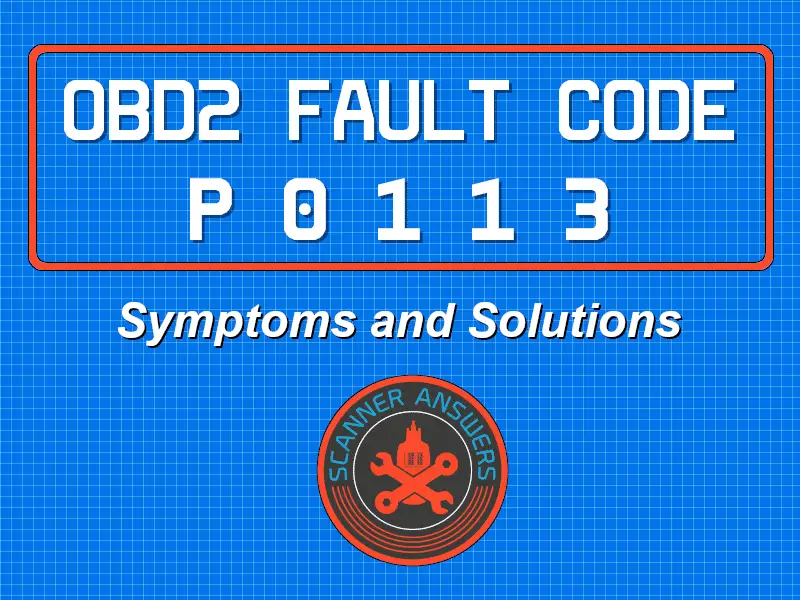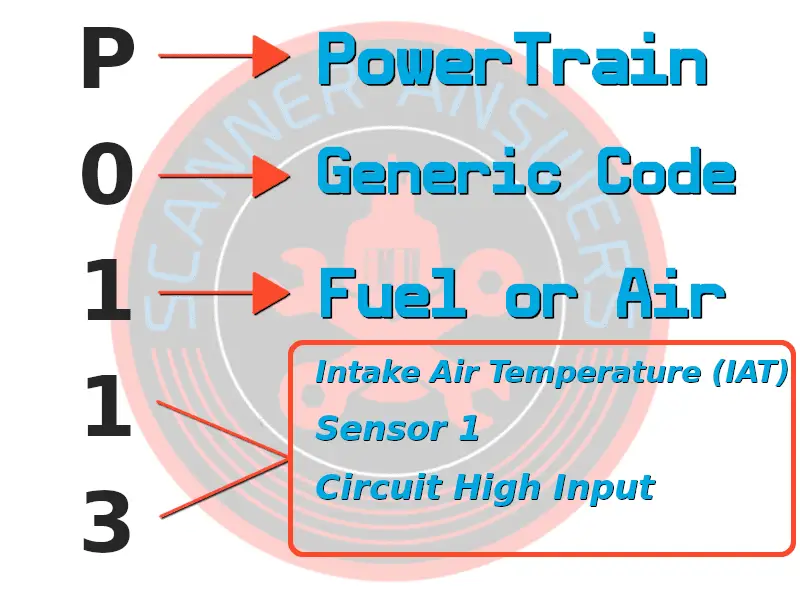
Meaning of P0113 Generic OBD2 Code
The technical definition of P0113 is: Intake Air Temperature (IAT) Sensor 1 Circuit High Input
In some vehicle models, the MAF sensor is equipped with an IAT sensor, although it is not uncommon for both sensors to be installed separately.
The IAT sensor operates my varying the resistance based on temperature. The code means a high input is detected in the circuit, which also means the intake air sensor is detecting lower resistance. The fault is closely related to other trouble codes like P0096, P0095, P0111, and P0112.
What are the causes of P0113 OBD-II code?
When we break down this generic fault code we see that it’s got something to do with the Fuel/Air mixture specifically triggering the Malfunction Indicator Light (MIL). In this case, the IAT sensor and wiring is where we’ll be focusing our attention.
P0113 Intake Air Temperature (IAT) Sensor 1 Circuit High InputThe first letter of the fault code will indicate the family. The first digit in the error code will signify if the code is Generic or Manufacturer Specific. The second number means specific areas (Fuel/Air, Ignition, Auxiliary, Engine Idle, Transmission, etc). The third and fourth numbers pinpoint help pinpoint the problem:
- P = Powertrain
- 0 = Generic fault
- 0, 1, and 2 = Air/fuel mixture
- 13 = Air intake sensor issues
The main cause of P0113 code is a broken IAT sensor.
If the output voltage of the sensor is higher than 5 volts (learn more about using a voltmeter here), the P0113 code is displayed in the scanner. Besides a bad or broken IAT sensor, this problem is also caused by faulty connections, shorted wiring, and/or interference from high-voltage wiring coming from the spark plug cables or alternator.
- Faulty IAT Sensor
- Shorted Wiring
- Failed PCM/ECU
In some extreme cases, the P0113 OBD2 Trouble Code is caused by a faulty ECU. However, this is highly unlikely unless you’re dealing with an older vehicle with higher mileage readings.

What are the symptoms of P0113 DTC?
The first obvious symptom of a P0113 fault is an illuminated check engine light. If this code is triggered, the engine will run in failsafe mode. The vehicle may be hard to start or refuse to start at all. If it does get cranking, the motor will run in extra lean mode and cause various engine issues such as rough idling and engine stalling.
- Check Engine Light (MIL) illuminated
- Rough Idling
- Poor Acceleration
- Failure to start
However, the symptoms of P0113 OBD-II code will vary on the make and model of your vehicle. In most cases, the vehicle will run fine despite the lingering presence of intermittent problems with combustion.
How much does it cost to fix P0113 Fault?
The diagnostic procedures will vary on the make and model of your vehicle. Since the P0113 generic DTC can be triggered by a host of problems, it is important to check the surrounding wires and connectors.
The next step is to observe the live data reading of the IAT sensor. If the sensor is disconnected and the sensor reading is at -40 degrees F, this means the sensor is shorted and needs to be replaced. If this is the case, you can expect to spend $90 to $120 in parts and labor.
However, if the IAT sensor is disconnected and the sensor reading is at 240 degrees F, this means the short is located in the connectors or wiring harness. This condition is most likely caused by aging or frayed wires and/or loose connectors. Troubleshooting wiring issues can be a timely endeavor for your mechanic or yourself, and prices could be from $100-$500.
The important thing to remember is to have the problem fixed at the soonest possible time.
Prolonged driving with a P0113 code will deteriorate the piston rings and the valves due to an extra lean running condition. This is bad news if you’re looking to save money since replacing the piston rings and the valves will require a serious amount of money to fix.
-Mike